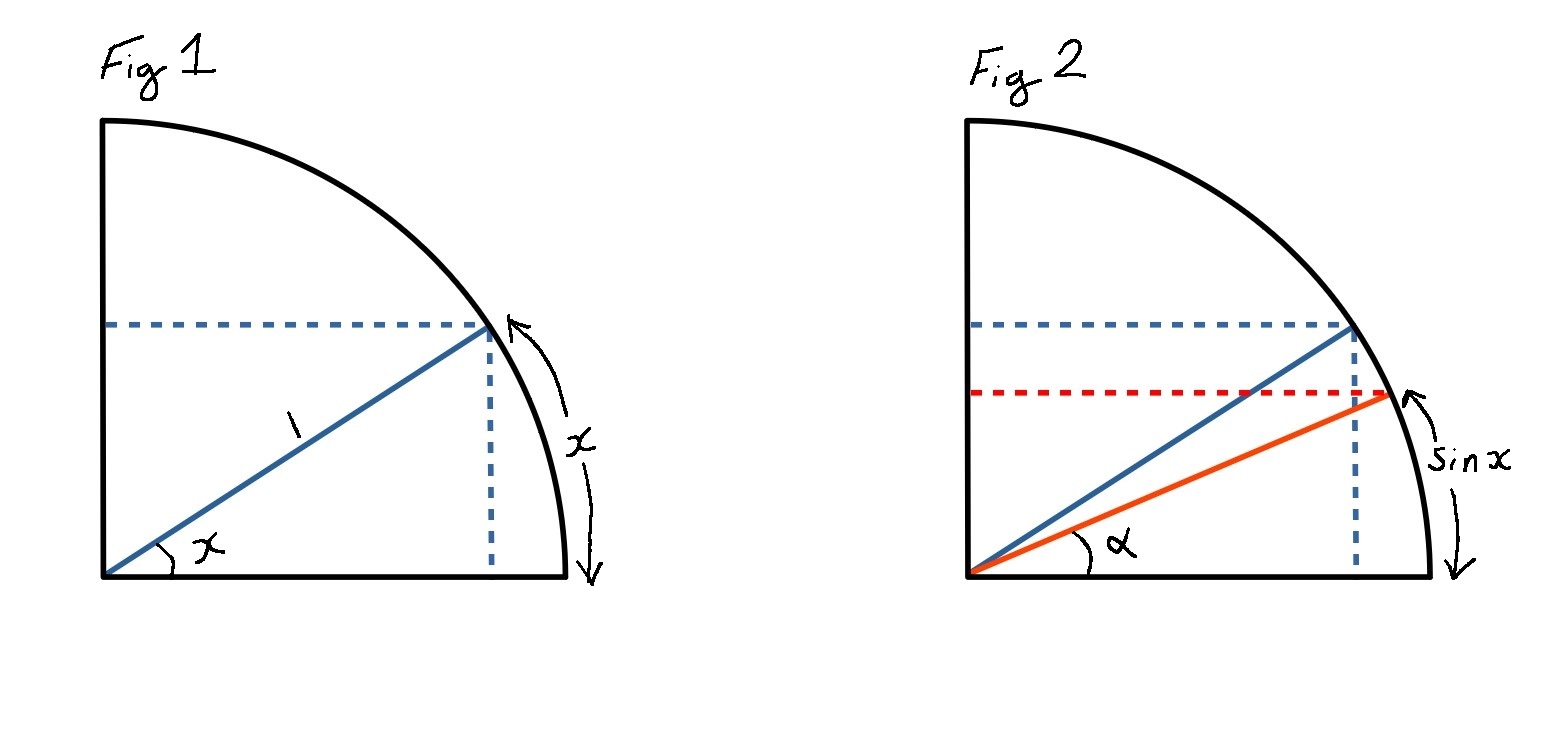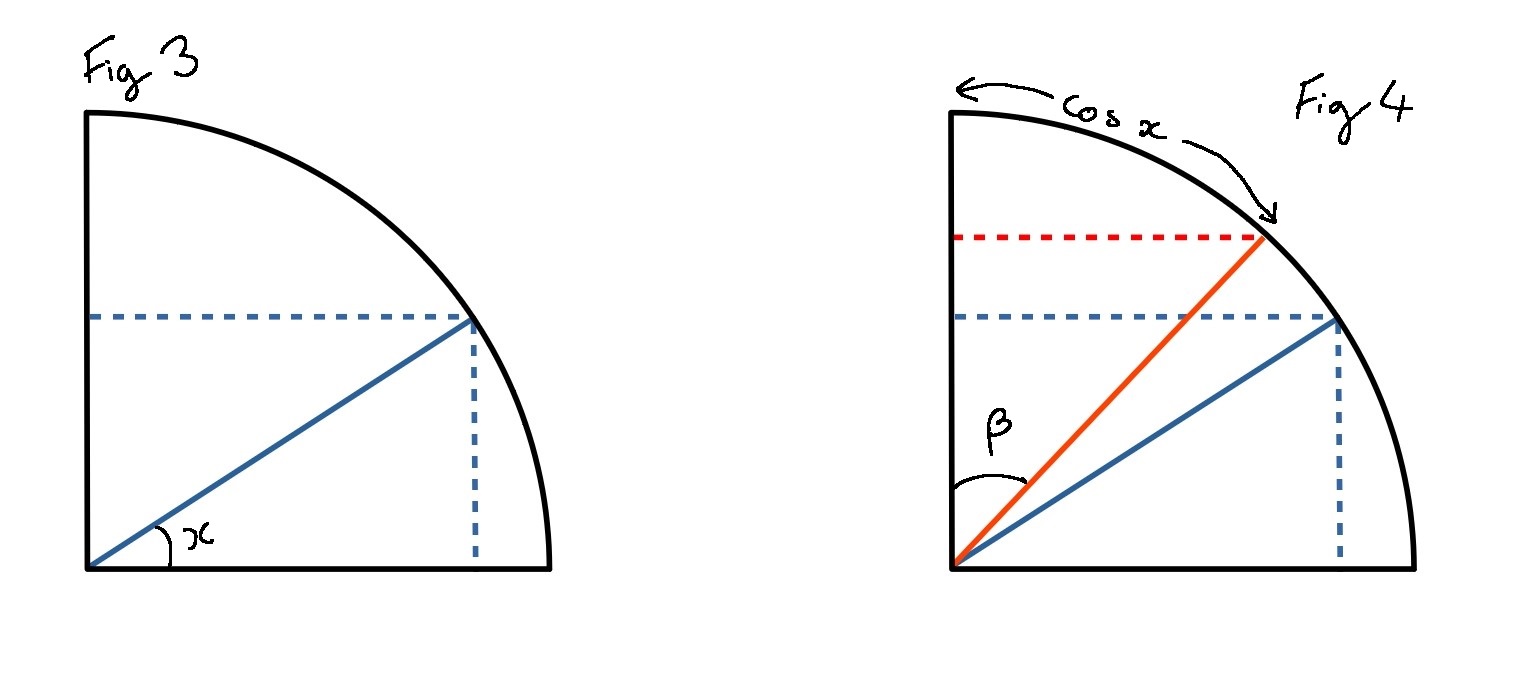Copyright © University of Cambridge. All rights reserved.
'Making Waves' printed from https://nrich.maths.org/
Show menu
It might be helpful to note that $1 < \frac {\pi} 2$.
From your sketches, you should be able to see that if you can prove the result for $x \in [0, \pi]$ then it will be true for all $x$. (You might like to compare your sketches with these graphs).
You should have already shown that $\cos(\sin x) > \sin(\cos x)$ when $x=0, \frac{\pi} 2$ and $\pi$.
Can you use your sketches to help you explain why $\cos(\sin x) > \sin(\cos x)$ when $x \in \left(\frac{\pi} 2, \pi \right)$?
The argument for $x\in \left( 0, \frac{\pi} 2\right)$ is a bit harder. One way to approach this is to try and prove the stronger result $\cos(\sin x) > \cos x > \sin(\cos x)$ for $x\in \left( 0, \frac{\pi} 2\right)$ instead.
You might like to sketch $y=\cos x$ alongside the other two graphs using Desmos to convince yourself this is true before trying to prove it!
Method 1: Calculus and increasing/decreasing functions
Lemma: $x > \sin x$ for $x\in \left( 0, \frac{\pi} 2\right)$.
- Let $f(x)=x - \sin x$
- Can you show that $f(x)$ is an increasing function?
- If $f(x)$ is an increasing function, then explain why this means that $x < \sin x$ for $x\in \left( 0, \frac{\pi} 2\right)$.
We know that $\cos x$ is a decreasing function for $x\in \left( 0, \frac{\pi} 2\right)$. Explain why this, along with the lemma result, means that we have $\cos(\sin x) > \cos x$.
Explain why the lemma means that we have $\cos x > \sin(\cos x)$.
A lemma is an intermediate theorem in the proof of another theorem.
Method 2: Geometry
Imagine a quarter-circle where the radius is equal to $1$.

- In Figure 1 explain why the arc length indicated is equal to $x$. Find the lengths of the dotted lines in terms of $x$. How does your diagram show that $x > \sin x$?
- In Figure 2 find $\alpha$ in terms of $x$, and also find the length of the extra dotted line. What inequality does this give you?

- Figure 3 is the same as Figure 1. Find the lengths of the dotted lines.
- In Figure 4 find angle $\beta$ in terms of $x$. Use this and the horizontal dotted lines to prove the second half of the inequality.